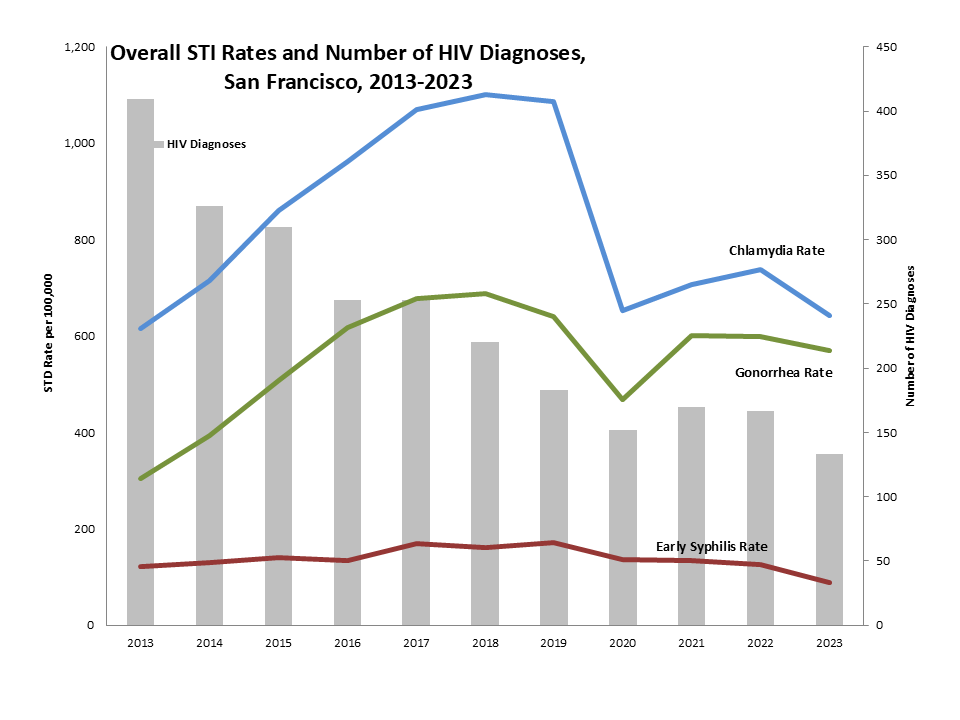Last updated April 9, 2025
From 2022 to 2023, the number of new HIV diagnoses in San Francisco decreased by 20%; the number of chlamydia diagnoses decreased by 13%, early syphilis diagnoses decreased by 30%, and gonorrhea diagnoses decreased by 5%.
San Francisco was one of the first urban centers to see declines in new HIV diagnoses: New HIV diagnoses declined by 59% from 326 in 2014 to 133 in 20231. These decreases are due to citywide efforts to scale-up HIV testing and early and widespread HIV treatment, a strong linkage-to-HIV care program (provided by the SFDPH LINCS team), and access to syringes, condoms, and PrEP (pre-exposure prophylaxis for HIV).
In contrast, rates of gonorrhea, syphilis and chlamydia increased each year from 2014 to 2018. There was a sharp decline in STI diagnoses in 2020 attributed to COVID-19 impacts on health care services. STI rates began to rebound in 2021. In October 2022, San Francisco became the first health department in the nation to release guidelines for doxycycline post-exposure prophylaxis (doxy-PEP). Following the roll-out of doxy-PEP, early syphilis and chlamydia have declined2.
The San Francisco Department of Public Health is focused on reducing STI health disparities and preventing the most severe complications of STIs in San Francisco. Thus, we prioritize our work with:
- gay, bisexual, and other men who have sex with men (MSM)
- adolescents and young adults, particularly those of color
- transgender people and
- people assigned female at birth, of reproductive age, who are at risk for syphilis infection (and therefore newborns with congenital syphilis).
2 Sankaran M, Glidden DV, Kohn RP, et al.
Doxycycline Postexposure Prophylaxis and Sexually Transmitted Infection Trends. JAMA Intern Med. 2025;185(3):266-272.

